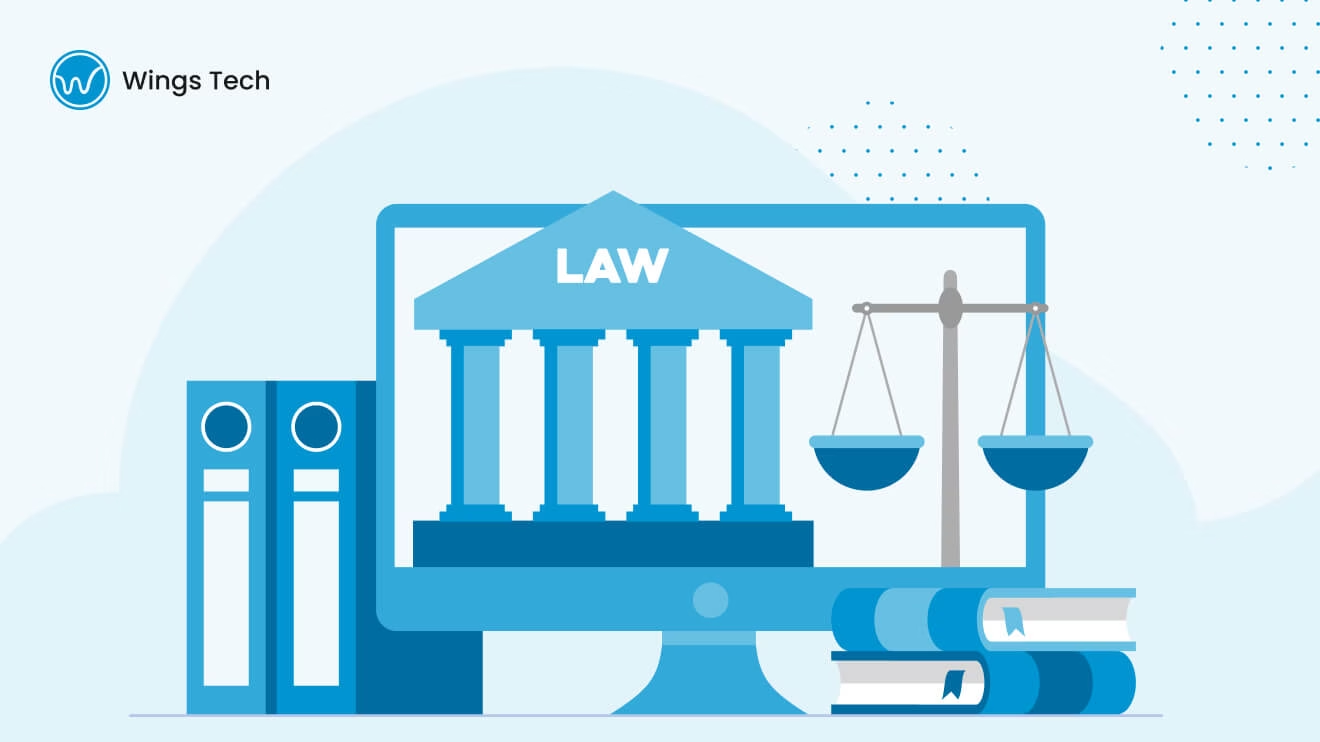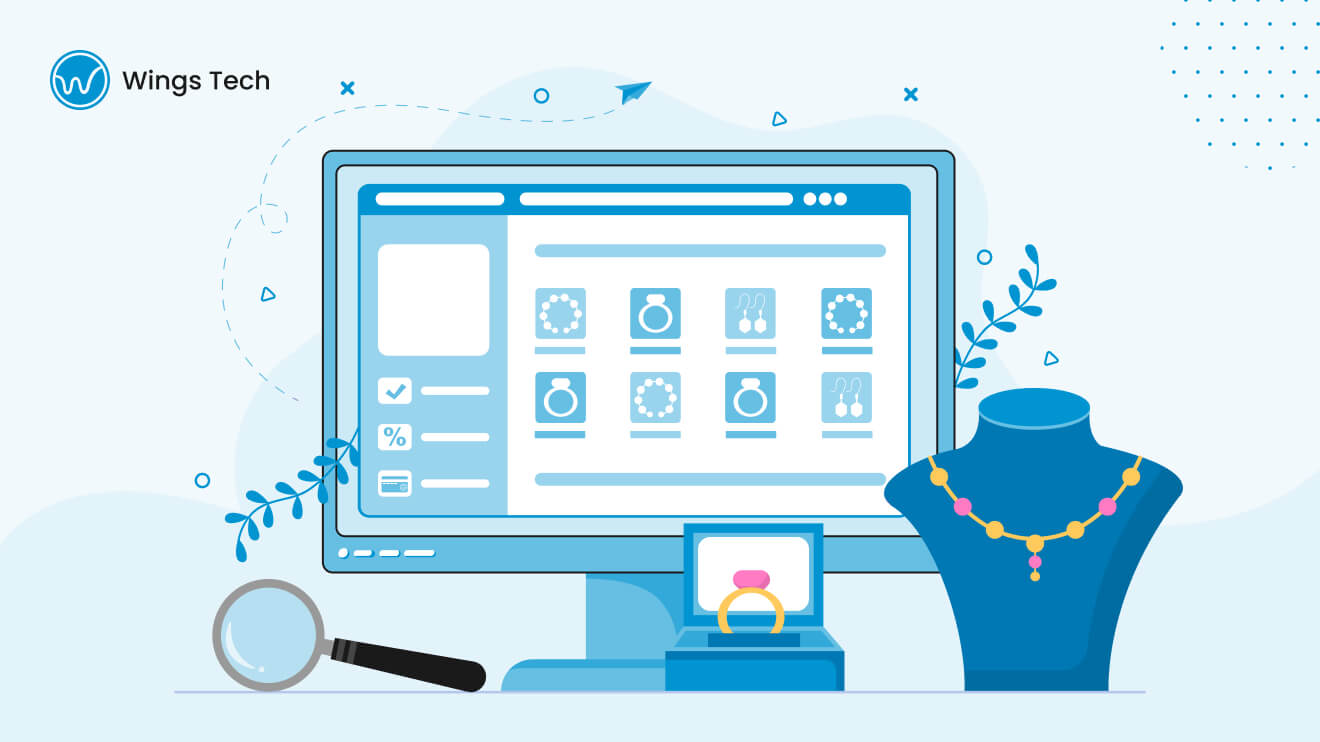Table of Contents
Almost every individual doing online transactions uses one or more web-based applications regularly. Be it purchasing online, sharing documents, managing tasks, or socializing, web apps are dominating the internet, proving that mobile apps can’t beat them. Knowing this, startups and established organizations are aligning their digital assets to cater to the demand and stay relevant in the age of fierce competition. If you are among them, this is your guide to custom web application development for thriving now and in the future.
In this article, we have covered questions like what is web application, their types, the steps to custom web application development, and the advantages and limitations of web apps. We have also discussed the cost and provided some suggestions on how to find a suitable developer or team based on your needs.
We hope this will be a useful guide if you are planning a custom web app development project successfully. Read on.
What are Custom Web Applications?
Custom web applications are software that run on web browsers and offer specific and customized features built for multi-user access. They are useful for micro, small, and medium-sized companies, and large organizations for internal and external use, offering customers smooth and hassle-free interactions and transactions.
Understanding Different Types of Web Applications
Let’s understand different types of web applications based on features and complexity, and their impact on your business, along with some examples.
Single Page Applications (SPAs)
A web app that loads content on one page using client-side programming based on user input is called a single-page application (SPA). Further, based on the user’s interaction with the page, it loads more parts and content using JavaScript APIs.
Some good examples of SPAs include Gmail, Twitter, Airbnb, Pinterest, Facebook, etc.
The benefits of an SPA include high speed and minimal load on the server, offering great performance and a more interactive experience. Likewise, some disadvantages include weaker SEO and performance monitoring, as it doesn’t load new pages.
Multi-page application (MPA)
A Multi-page Application or MPA is a multi-page app that loads a page based on user interaction. Some good examples are e-commerce websites like Amazon and Flipkart. They send data to the server to generate a new page based on user input. They are better at creating custom pages based on the user’s needs.
MPAs are easy to build and maintain and offer the advantage of better SEO, page load speed, scalability, and browser compatibility.
Static Web Apps
Static web apps have fixed content and visuals and allow minimal user-server interaction. They generally include company websites showing products and services that need rare changes over a long period. The content of a static website is stored on the server and delivered to the browser as it is. Due to the static nature, updating such pages requires the developer’s involvement unless they are built with a CMS.
Dynamic Web Apps
Websites that allow modifications in content and appearance based on user input are called Dynamic Web Applications (DWAs). The main benefits of DWAs are flexibility and a personalized and engaging experience.
Dynamic websites can be single-page or multi-page and use JavaScript and server-side programming for the front end and back end to deliver custom experiences.
Facebook, Twitter, Netflix, and Trello are some examples of Dynamic Web Applications.
Progressive Web App (PWA)
Progressive web applications are like native apps, combining the features of mobile and web apps. They can perform across devices and browsers and offer a fast and reliable user experience with an engaging and interactive interface.
They can provide both offline and online access with better loading speeds. Further, they auto-sync updates made on the server so that users can always use the latest version.
Enterprise Web Applications
Enterprise web applications (EWAs) address complex requirements specific to an organization and are useful to improve operations and decision-making processes by enabling cross-departmental collaboration. Websites that aid business operations, like human resources, inventory, supply chain, finance, and accounting, fall into this category.
Some examples of EWAs include ERP systems like SAP and Microsoft Dynamics 365, CRMs like Zendesk and Zoho, and productivity and collaboration tools like Google Workspace.
Project Management
As the name suggests, project management web applications are the tools that help manage projects in various industries. They include functions like project planning and execution, task management and tracking, team communication and collaboration, document sharing, resource management, and reporting, often integrating seamlessly with a unified communication solution to streamline workflows.
PM platforms are categorized as SaaS which offers ready-to-use-platform or PaaS, which allows ready-to-use components for building web applications. Further, they can be web-based or cloud-based, based on their hosting server type. They help project managers and teams to plan, collaborate, communicate, and execute tasks and ensure timely completion. Some good examples include Asana, Joho, Trello, Wrike, and Jira.
Social networks
As we know, Facebook, Instagram, and LinkedIn are some of the most popular social media platforms. On the other hand, many businesses, communities, and organizations have customized social networking platforms. CMSes like WordPress and Drupal offer ready-to-use features or allow the creation of custom features to build a social network.
Start your custom web app journey today
How to Create a Custom Web Application
Conduct Thorough Marketing Research For Your Idea
Conducting thorough research on various aspects, including the feasibility and opportunities to support your idea is the first step to get started. Know your audience, demand, and available solutions, and analyze leading players (your competitors), and industry trends.
Define the app’s functionality and the Project’s Scope
Next comes the documentation on the design and features of the app. The Specifications and Design Document will create a pathway guiding you from the starting point to the successful launch of your custom web app. This is a crucial step as you have to choose a web application development company during this stage.
Plan User Experience (UX) Design
User Experience or UX design is as important as the features are. The success of your web application depends on several essential things, and UX comes at the top of the list. So specify each part of the design with careful research. From navigation to inquiries and messaging or form submissions, and service/product selection to checkout and payment, everything should provide the best user experience to stay ahead of the competition.
Choose the Right Technology Stack
The next step is to choose the right technology stack depending on your custom web application type. While HTML, CSS, and JavaScript are enough for a static website, a dynamic application needs client-side technologies like jQuery, React, Angular, and Vue.js, to name a few.
Regarding server-side technologies, PHP, Python, and Node.js can build complex features and functionalities that allow users to interact with the server and database.
Looking at the coding part, a web app can be built with low-code, no-code, and other core technologies. While the tech stacks discussed above are core technologies, some CMSes allow application development with low-code or no-code.
WordPress, Drupal, and Joomla are some of the PHP-based low-code CMS. They allow secure and progressive web app development for large organizations with little to complex custom features. You can build basic websites without needing any custom code.
Develop Backend Functionality
Backend development is also called server-side development, and it connects users with the server and database enabling data storage, display, and user-server communication.
This stage covers a major part of the custom web application development cost. Hence, your choices of technology stack and custom web app development company would play a crucial role.
Design Frontend Components and deploy them
Displaying website components, like navigation, content, visuals, and structural elements like headers, footers, and sidebars, requires frontend development, also known as client-side development. It involves converting prototypes and wireframes into seamless and visually appealing pages to provide an easy user interface (UI) and smooth user experience (UX).
Implement Features and Functionality
The next step is implementing the features and functionalities into the website. Follow each guideline of your design document while implementing essential features and testing them for reliable performance. Also, ensure flexibility for future expansion and enhancements of the scope and functionalities.
Perform Rigorous Testing
The application should be free from bugs, errors, and performance issues. Hence, this step includes feedback collection from testers and stakeholders and using them to refine and improve your custom website. So, intensive testing with manual and automated methods is crucial for identifying and resolving unit, integration, and user experience issues before deploying the app on the production server.
Deploy and Monitor Performance
Once your custom web application development is complete, deploy it and start monitoring its performance. Collect performance data from the actual users in a production environment. Track important metrics, like user engagement, performance, response time, and website uptime. If there are any issues, errors, or bugs, it is crucial to take prompt corrective actions.
Ongoing support and maintenance of the app
Once the users start using it, there will be feedback suggestions, support requests. Hence, ongoing support, timely response, quick issue resolutions, and maintenance are the keys to ensuring a satisfactory user experience. So, make sure to provide ongoing support, watch trends and new technologies in the market, and keep your users updated with the changes in your website to stay ahead of the competition.
Talk to our team about your web app project
Advantages of custom web application development
Competitive Edge or Problem-Specific Solutions
Competing with the industry giants is not easy for small-scale businesses. If you’re using an existing solution, you won’t look different from others.
Hence, if you’ve customized solutions, a custom web application will help you stand out in the competition. It further aids in branding, making it easy for prospective customers to recognize your business.
Also, custom web application development is a good option for companies that want to modify apps to fit their needs and ideas.
Tailored Solutions
A custom-designed web application is a simple solution that you can customize to meet your company’s needs. You can do it starting from the ground, up to the point of implementation, and regular maintenance.
A custom web app offers a personalized experience to its users and improves customer satisfaction and loyalty.
You can design the features based on your users’ needs, making the app easier to understand. Plus it can improve your team’s performance if they can use it to its fullest potential.
Enhanced Retention
Every business has goals, and a customized website can help you achieve them. The reason is that you can integrate your company’s unique characteristics and brand voice with its design.
Customer interaction with a business can be well-planned and executed with a customized website. So the users will have a pleasant experience and high satisfaction. Needless to say, satisfied customers may return and refer new customers.
Scalable Flexibility
The scalability of a web app is measured by its capacity to handle many users at a time without interruption or malfunction. Scalability helps companies boost revenue and expand. A customized web app is scalable to tour company’s needs, meaning it isn’t necessary to purchase or change to a larger plan at any point.
The app must have an infrastructure to handle the large traffic and add new features. Custom-designed web applications are capable of adapting to changing needs without difficulty. That’s why companies choose custom web application development over pre-built solutions.
Seamless Integration
Custom web applications are easily integrated into a firm’s workflow. You’ll be able to connect back-end and front-end actions effortlessly. Every bit of information on the website will be automatically updated to the database. You can also integrate the custom web apps with other tools already in sync with your business processes.
Enhanced Security Control
When you use an off-the-shelf program, your business and customers’ security is at the mercy of third-party vendors. If there is a cyber-attack or security issue, regaining your database may not always be possible.
Opposite to it, a custom web application ensures that your business is safer from external and internal threats. You can choose a robust development platform, and your team can swiftly react in case of a cyber-attack.
Moreover, custom software solutions are more difficult to penetrate. Hackers cannot look over the code to determine any entry points, as only your developers know how the code works.
You can also include more than one security option to make your app more secure and difficult to hack. Additionally, you are in complete control over data storage and user access. So you can ensure the user’s security of their personal and sensitive information.
Long-Term Cost Efficiency
Custom web application development is no doubt expensive at first. Yet, it’s a one-time investment, and you’ll reap the benefits for life. Additionally, you don’t have to spend money on lesser-value features or monthly subscriptions.
The app will be your own, meaning there will be no cost or licensing problems. Hence, you will be saving on those costs if you choose to outsource your website app development to an app-development agency.
Developers concentrate on a single codebase that serves every user on the internet. This helps reduce development costs, time-to-market, and ongoing maintenance costs.
Build your custom web app today!
Limitations of custom web application development
Higher Initial Cost
The main drawback of custom software is the high initial cost. You will need an experienced team of designers, developers, project managers, and QA engineers. This can result in higher costs when compared to solutions available off the shelf. But also note that the benefits in the future outweigh the costs.
Ongoing Maintenance Costs
Monitoring and maintenance require additional manpower and extra funds. Some applications may need a lot of time-to-time maintenance. It all depends on the complexity of the program and the way it was written. Also, technologies update quite fast in today’s world, likewise, your app will have to be updated always.
Cross-Platform Challenges
Your website should be compatible with different platforms and browsers. So it requires more effort in development and testing. Ensuring an identical user experience across various platforms can be difficult. Especially when the screen dimensions and design guidelines differ.
The integration of cross-platform applications isn’t easy. So you must keep this in mind while discussing your project with your developer or web development agency that you are going to hire.
Performance Limitations
The performance of web-based applications is affected by multiple factors. I.e., server load, internet speed, and the browser’s compatibility. Processing heavy data or using complex functions can result in slow performance or even delays during high usage. Hence, optimizing performance with efficient code techniques and management of servers is a must. Taking care of this aspect is important for ensuring a smooth experience for users.
Limited Device Access
Web-based apps might have limited access to some APIs and hardware features compared to general apps. This can impact the capabilities and performance of the app. Some features that require integration of device capabilities, like sensors and advanced graphics. If that’s the case in your web app, you must check with your developers and look for alternative solutions. The developer should come up with the ideas for alternative ways for the same before you hire them.
Expertise Requirements
Building and maintaining a custom and complex web app requires a strong technical background and knowledge. It could be difficult for an inexperienced developer or a team to figure out the precise requirements of such a project.
Thus, you’ll have to do your research on the web-development agencies or the developer. Look for their past work and testimonials from their previous clients. Ensure that they have all that it takes to work on your custom web application development project. After all, you are investing your precious time and money in your website.
How much does a custom web application development cost?
The custom web application development cost depends on factors like complexity, technology stack, the developer’s location, etc. Complex applications require a higher budget than simpler projects with standard functionalities due to the expertise level required.
The cost may also differ based on the type of pricing. While choosing hourly rates offers advantages of geographic location and expertise, a fixed price provides certainty of budget, milestones, and deliverables. Apart from that, you should consider additional costs for server and domain hosting, third-party integrations, maintenance, and ongoing support.
In short, you should conduct extensive research and consider all factors, including uncertainties, to determine a budget for your web app.
Where to Find Custom Web Application Developers
Choosing developers is a complex task. You can have an in-house team, a freelancer, an offshore agency, or a custom web and mobile application development company.
You can hire a freelancer from platforms like Upwork, Toptal, Turing, or TopCoders, or hire an in-house team. Or, you can assign your project to a custom web application development company.
Conclusion
Custom web applications have become essential for the success and growth of businesses due to their benefits. We discussed what custom web applications are, their types, their advantages and limitations, and their cost factors. Further, we discussed how to create custom web apps, explaining 10 easy steps. Finally, we explored various options for hiring developers. We hope you found here a useful guide for your custom web application development project.








